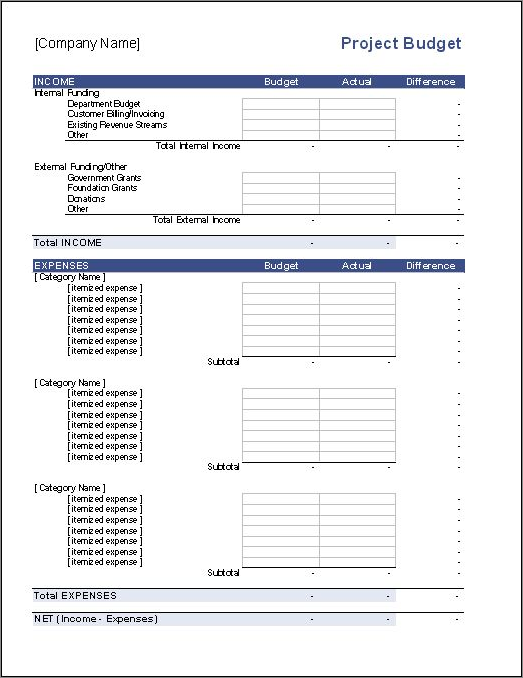An itemized budget is a detailed financial plan that breaks down income and expenses into specific categories. It provides a clear picture of where your money is coming from and where it is going. By tracking and categorizing your expenses, you can gain insights into your spending habits, make informed financial decisions, and effectively manage your money.
Why Should You Create an Itemized Budget?
Creating an itemized budget is crucial for several reasons:
- Financial Awareness: An itemized budget helps you understand your spending patterns and identify areas where you can make adjustments to save money.
- Goal Setting: With an itemized budget, you can set realistic financial goals and track your progress toward achieving them.
- Debt Management: By tracking your expenses, you can identify opportunities to reduce debt and allocate funds towards paying off loans or credit card balances.
- Saving for the Future: An itemized budget allows you to allocate funds towards savings, investments, or emergency funds, ensuring financial security.
- Decision Making: With a clear overview of your finances, you can make informed decisions about major purchases, investments, or financial commitments.
How to Create an Itemized Budget
Creating an itemized budget involves several steps:
1. Determine Your Income
The first step in creating an itemized budget is to determine your total income. This includes all sources of income, such as salary, freelance work, rental income, or investment returns. Calculate your monthly or annual income and record it.
2. List Your Expenses
Make a comprehensive list of all your expenses. Start with fixed expenses, such as rent or mortgage payments, utility bills, insurance premiums, and loan repayments. Then, move on to variable expenses like groceries, transportation costs, entertainment, and discretionary spending. Be thorough in listing all expenses, no matter how small.
3. Categorize Your Expenses
Once you have listed all your expenses, categorize them into specific categories, such as housing, utilities, transportation, groceries, dining out, entertainment, and savings. This will help you gain a clear understanding of your spending habits and identify areas where you can reduce expenses.
4. Assign a Budget to Each Category
After categorizing your expenses, assign a budget to each category based on your financial goals and priorities. Ensure that your income covers all your expenses, and if not, consider adjusting your spending or finding ways to increase your income.
5. Track Your Spending
Maintain a record of your expenses and regularly track your spending against your budget. This can be done using budgeting apps, spreadsheets, or financial management tools. Review your spending regularly and make adjustments as necessary to stay within your budget.
6. Evaluate and Adjust
Periodically evaluate your budget and make adjustments based on changes in your income, expenses, or financial goals. Life circumstances, such as a job change, a new addition to the family, or unexpected expenses, may require you to modify your budget accordingly.
7. Seek Professional Help if Needed
If budgeting seems overwhelming or if you need assistance in creating a comprehensive itemized budget, consider seeking help from a financial advisor or a budgeting expert. They can provide guidance, offer personalized advice, and help you optimize your budget for maximum financial stability.




The Benefits of an Itemized Budget
An itemized budget offers numerous benefits:
- Financial Discipline: By tracking your expenses and sticking to your budget, you develop discipline in your spending habits and avoid unnecessary debt.
- Increased Savings: An itemized budget helps you allocate funds towards savings and investments, ensuring a financially secure future.
- Debt Reduction: By identifying areas where you can cut back on expenses, you can allocate more funds towards paying off debt and becoming debt-free.
- Financial Awareness: An itemized budget provides a clear overview of your financial situation, allowing you to make informed decisions and plan for the future.
- Goal Achievement: With a well-planned budget, you can set and achieve financial goals, whether it’s buying a house, starting a business, or traveling the world.
Tips for Maintaining an Itemized Budget
- Keep Detailed Records: Maintain a record of all your income and expenses to ensure accuracy and clarity in your budgeting process.
- Review and Adjust Regularly: Regularly review your budget and make adjustments as necessary to accommodate changes in your financial situation.
- Be Realistic: Set realistic goals and expectations when creating your budget. Avoid overestimating your income or underestimating your expenses.
- Track Your Spending: Monitor your spending regularly to ensure that you are staying within your budgeted amounts for each category.
- Plan for Unexpected Expenses: Set aside a portion of your budget for unexpected expenses or emergencies to avoid financial stress.
- Seek Support and Accountability: Share your budgeting journey with a trusted friend or family member who can provide support and hold you accountable.
Conclusion
An itemized budget is a powerful tool for managing your finances, achieving your goals, and securing your financial future. By creating a detailed plan and tracking your income and expenses, you can gain control over your finances, make informed decisions, and work towards financial stability and success.
Itemized Budget Template Excel – Download
